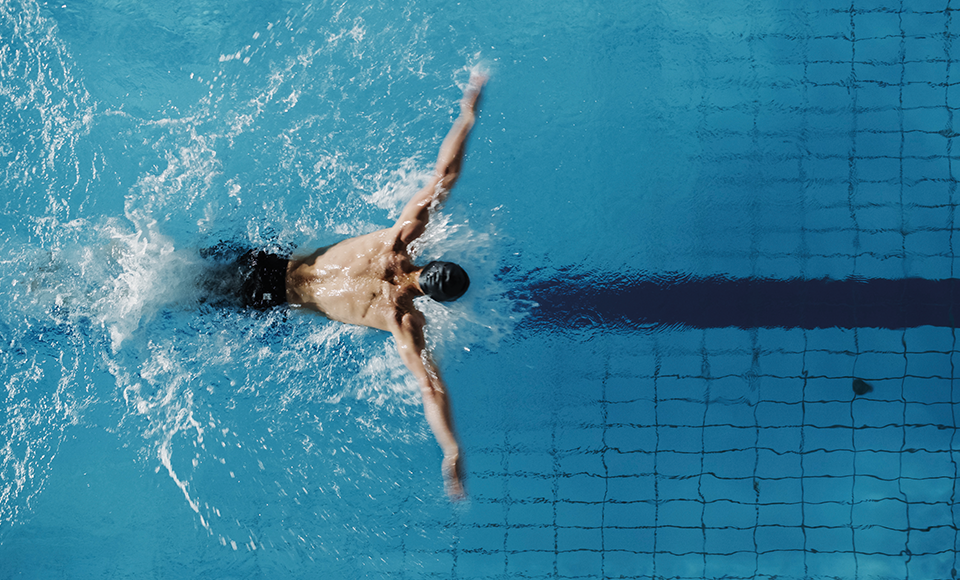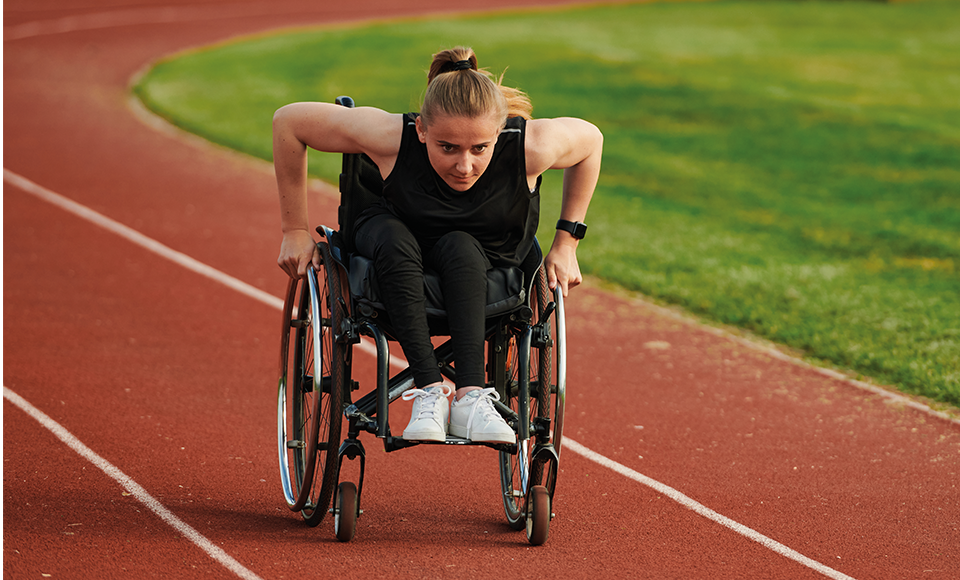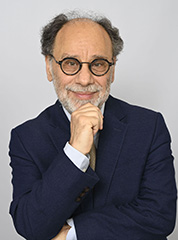

Elite athletes and the sports industry
[July 2024] For more than 4 years, BPCE economists have been analyzing the sports industry from a number of different angles.
In this exceptional year for sport, they present us with a ‘Grand format’ study devoted to two related themes: firstly, unprecedented insight into the world of elite sportsmen and women, enabling us to get a better idea of the career trajectories and experiences of the men and women who carry our flag in competitions and, secondly, the continuation of our economists’ in-depth analysis of the French sports industry, with an update of their previous, and widely acclaimed, work notably involving an assessment of the impact of this sector on the wider French economy.


Elite athletes: experiences, career trajectories, expectations
This ground-breaking study devoted to elite athletes was conducted via an online survey of a representative sample of 439 elite athletes officially registered on the Ministry of Sports’ high-performance lists, backed up by about twenty in-depth interviews. In this year of the Olympic & Paralympic Games Paris 2024, this study provides an opportunity to take a closer look at this little-known universe, often masked by the fame of a few high-profile athletes who are far from representing the majority of athletes in the elite category. How do you become an elite athlete? What obstacles must be overcome and what are the factors of success? How do you prepare for life after the end of your sporting career?
At the beginning, unwavering support from the family
Elite athletes rarely achieve excellence by chance. In the early years, their parents’ active involvement is decisive, whether in terms of transportation, psychological or financial support, or in awakening a vocation or in choosing a sporting discipline. Sport is frequently a major presence in the family environment: 79% of elite athletes come from a family environment where sport is considered “important,” and 30% have an elite athlete in their circle of family and friends. Local clubs also play a decisive role, testifying to the strength of relationships with coaches and team-mates but also to the importance of the associative fabric in high-level sport in France. Conversely, school sport has only a marginal impact on the detection and development of talent: a promising reservoir that should be better exploited, according to the athletes interviewed.
The beginnings of elite athletes differ considerably. Most of them start at an early age: 59% of elite athletes began playing their sport before the age of 12, including 28% before the age of 7. Others, such as para athletes in particular, build up their careers more gradually or later. Generally speaking, 80% of these athletes feel that, in the early days, “one thing followed on from another quite naturally.”
Making a success of a sporting career: sacrifice, determination… and fun!
The life of an elite athlete revolves around training and competitions. The impact of sport on their daily lives is unequal: 62% of athletes feel that sport dominates their lives, while for the rest, its presence in their lives is fairly “well-balanced.” On average, elite athletes say that sport accounts for 67% of their lives.
The omnipresence of sport leads to certain trade-offs, even sacrifices, especially in their social lives (84%) and leisure activities (77%). What’s more, 60% of elite athletes say they have given up having “ordinary” family lives, and 31% admit that they have put their love life on hold. These sometimes onerous choices highlight the mental strength and determination required to pursue a career in elite sport, qualities which are also the primary factors of success mentioned by the athletes included in the survey.
88% consider their sporting career to be satisfactory so far
Accepting these sacrifices presupposes a strong personal commitment and resilience. When we ask athletes about the emotional qualities they feel when they practice their sport, a taste for effort and concentration are the most important. The No.1 sensation, however, is “pleasure” along with a number of other positive emotions: a sense of achievement, fun, etc. Competing is also a motivating factor: it represents a personal challenge (50%) but also an opportunity to represent one’s country or region (49%)… and that fantastic burst in adrenalin (48%).
While most elite athletes rate their careers positively, almost two-thirds of them have had to deal with health problems and setbacks. They identify several areas for improvement in their support. The first is psychological support: 21% of them say they have suffered from isolation and 30% from burnout. The second is the financial dimension, a problem raised by 52% of the elite athletes in the survey. Lastly, they express high expectations in terms of access to facilities and preparation for professional reorientation, in particular access to special arrangements for study or work that would simplify their daily lives while simultaneously preparing for their future.
Sport, study and work: reconciling time with professional reorientation
Nearly 9 out of 10 elite athletes are studying and/or working while simultaneously pursuing their sporting careers. Roughly half of them (60%) consider work to be a necessity: economically speaking, working is a sine qua non for pursuing their sporting careers. However, having professional activities has another advantage: it also represents a way for them to prepare for the future and provides a balance, and even a passion which, for 65% of them, is easily reconciled with their lives as elite athletes.
In their studies, these athletes are frequently given flexible timetables but they find it more difficult to reconcile their sporting career with their studies than students also holding down a job. While studying is seen as a way to prepare for the future (84%), and even as a source of balance and personal fulfillment (50%), a quarter of athletes see studying as an “obligation.”
Athletes often refer to the American model, where sport is both a source of prestige and a subject forming an integral part of the curriculum.
73% think that the fact of having been an elite athlete is an asset for their professional reorientation
The career of a high-level athlete is, by its very nature, of short duration. For 75% of the athletes questioned, professional reorientation is not an option but a horizon, and a subject for reflection. In practice, 42% of elite athletes anticipate starting a new career within the world of sport itself (as a coach or trainer, but also club manager or director) while 32% think of moving into a totally different field, covering a wide range of professions (healthcare, science, services, etc.). Only 27% feel that they have been helped and/or informed in their professional reorientation, and 43% would like to receive this support. Expectations are high, but the athletes are rather critical of the different entities comprising the elite sports ecosystem. Among the entities involved in their career switch, employers (companies, public authorities, etc.) are currently considered to be the most effective.
Being or having been an elite athlete has an ambivalent impact on their professional careers. On the one hand, their status initially had a limiting effect on their options: 40% say they had given up looking for certain jobs and 36% turned away from certain studies. But, on the other hand, the experience of being an elite athlete is viewed as an advantage when the athletes actually start their career transition, not only in terms of the personal qualities developed (96%), but also in terms of reputation (73%) and their personal network (73%). Qualities capable of being transferred to the professional world include the ability to handle pressure and tenacity – physical qualities only mentioned by a third of elite athletes.
Elite sport in France: how French people and the athletes see each other
High-level sport is shrouded in a form of misunderstanding. When the French are asked to name some elite athletes, the 3 most frequently cited names are Kylian Mbappé (19%), Teddy Riner (11%) and Rafael Nadal (7%)1. People’s perception of top-level sport is strongly influenced by spectator sports and the media aura surrounding a few emblematic athletes. Moreover, the two terms most often associated with elite sport by the French are “competition” and “money.” The real situation experienced by top-level athletes, however, is quite different: many work at the same time as they pursue their sporting discipline, and 57% of them consider their financial situation to be difficult.
Elite athletes, in all their great diversity, are nevertheless gradually enjoying greater visibility, partly thanks to the organization of the Olympic & Paralympic Games Paris 2024. At least that’s the opinion expressed by the athletes included in the survey: according to 41% of them, the image of elite athletes is tending to improve. 46%, however, feel that their status remains under-valued in society, or even ignored (17%), compared to 36% who feel it is respected and valued.
Elite athletes are aware of the societal role played by high-level sport and the role model they embody. In their view, elite sport not only allows people to dream, it also inspires, promotes the values of pushing personal boundaries and the practice of sport in general.
1 L’ObSoCo / EDF / Groupe BPCE survey, L’Observatoire des nouveaux imaginaires sportifs (The Observatory of new perceptions of sport), January 2024.

The results are based on an online survey conducted from May 6 to 20, 2024 among 439 elite athletes aged 18 or more. The athletes questioned are currently, or have been, officially registered in the Elite / Senior / Next Generation / Career Transition categories between 2021 and 2023. France has around 5,000 elite athletes in these four categories. The survey was carried out under an agreement between BPCE and the French Ministry of Sports and the Olympic & Paralympic Games, the French National Sports Agency (ANS) and Insep, as part of the Sport Data Hub (SDH) partnership. The results are the sole responsibility of BPCE.
A diverse and dynamic sports industry


For more than four years, BPCE L’Observatoire has been analyzing the sports economy viewed as an industry in order to move away from a media-centric view of sport as a spectacle and from a statistical approach that frequently excludes the industry’s role as a service. With the start of the Olympic & Paralympic Games Paris 2024 only days away, BPCE L’Observatoire offers an update on its work on the private-, public- and voluntary-sector entities involved in the sports industry. How much did sport contribute to French GDP in 2022? What notable changes have occurred in the fabric of sports companies and in non-commercial contributions to the sports industry?
The sports industry in France: 2.6% of GDP
The sports industry forms a highly diversified ecosystem that encompasses the public sector (from small municipalities to the Ministry of Sports), the voluntary sector (with its 15 million license-holders), 144,000 private sports companies (ranging from independent coaches to international intermediate-sized enterprises) and, above all, 74% of French people who say they “do sport” (on an occasional or regular basis)1.
Based on work carried out on all the economic agents active in the sector, BPCE L’Observatoire estimates that the sports industry accounted for 2.6% of French GDP in 2022, or 68 billion euros. The non-commercial share is much higher than the average for all industrial sectors, reaching almost 40% of the total. This is mainly reflected in the investment made by public authorities in sports facilities, and in the intermediation of sports services (teaching, access to facilities, etc.) provided by associations, local authorities, and the State.
The commercial component, however, remains the largest part of the industry’s contribution to the French economy thanks to direct household consumption and corporate investment, combining capital expenditure by sports companies (6 billion euros) and sports sponsorship activities (1.5 billion euros) considered here as an intangible investment.
Households’ final consumption of sports goods and services accounts for 55 billion euros of the 68 billion euros of sports GDP, making it the mainstay of the GDP generated by sport.
1 Source: Obsoco survey.
Spending on sport falls into three main categories:
- Expenditure of almost 20 billion euros on the purchase and rental of sporting goods,
- Spending of 5.7 billion euros on services associated with spectator sports (media, access to events, games and betting, etc.),
- Physical and sporting activities of households generate expenditure of 29.3 billion euros, either in the commercial sector (around 10 billion euros) (gym memberships, sports coaching, tourism, etc.), or in the non-commercial sector (through associations, physical and sports education in schools, and the use of public sports facilities).
Although this calculation shows that the sports sector makes a large contribution to French GDP – comparable to that of the hotel and catering industry – it does not fully reflect the place of sport in society. Owing to the nature of the calculation, the result fails to take account of the sector’s positive externalities, notably in terms of health.
What is more, the non-commercial sector, which is omnipresent in the industry, is only valued at production costs, not market prices, and fails to take account of the extensive voluntary work from which the sector benefits. All these traditional limitations on the measurement of GDP have an even greater distortion effect when it comes to analyzing the sports industry.
Local and regional authorities, the leading public financiers of sport
Local and regional authorities are the leading public financiers of sport in France. Their contribution is estimated by BPCE L’Observatoire at 14 billion euros in 2022, almost double the French government’s budget for sport, including the national education system. Despite the health crisis and pressure on local finances, a sharp rise in sports spending by local authorities has been observed.
At 12.3 billion euros, the bulk of this contribution is made by the local government bloc, which includes municipalities (8.7 billion euros) and intermunicipal entities (3.6 billion euros). The role of the départements and regions is more limited nationwide, although it can be significant in some parts of France (Mayenne, Nièvre, Seine-Saint-Denis, Corsica, and French overseas territories):
- Municipalities play a leading role in guiding local sports policies, on the one hand through the construction, management and provision of sports facilities and, on the other, through support for sports associations (subsidies, provision of resources, organization of sporting events, relations with schools, etc.). Sport, the second-largest expense item for local authorities after education, is considered a political priority by elected representatives,
- Intermunicipal entities provide a way to promote territorial efficiency, as they enable investment efforts to be pooled on larger facilities that remain geographically accessible. In a tight budgetary environment, the role of these intermunicipal bodies has been strengthened in recent years,
- The départements and regions respond to extra-municipal issues: financing secondary school sports facilities, subsidizing major sports facilities and supporting higher level sport (regional and professional clubs, assistance and training for elite athletes, etc.)..
Local authorities own more than 80% of the 332,000 sports facilities in France, and invested some 5.8 billion euros in 2022. Despite this ongoing effort, however, 22% of existing facilities were built before 1985 and have never been renovated. Some regions, such as Île-de-France, Brittany, Alsace and Rhône-Alpes, have a large stock of old, unrenovated facilities, which could lead elected officials to favor a policy of renovating existing facilities and limiting the construction of new ones. This situation is more common in large cities, where the sports boom took place earlier and which are now faced with a growing shortage of available land. Renovation also poses an energy challenge, since almost two out of three indoor facilities are heated by oil or gas, which not only affects the climate, but also increases future operating costs, and therefore the preservation of a high-quality public sports service.
Sports businesses: a powerful productive fabric
The sports industry comprises over 144,000 companies, an increase of almost 30% in the space of 4 years, and generates sales of 73 billion euros. This demographic growth in the number of companies has continued for over 10 years, and has been immune to the economic crisis. It is driven by companies without employees, often independent sports coaches, while the economic weight of the sector is concentrated among larger entities.
3 250 SMEs/ISEs generate 41 billion euros in sales
The first pillar is consequently demographic, with almost 120,000 sports businesses with no employees generating sales of 9.5 billion euros. This category encompasses a wide variety of situations. On the one hand, some 50,000 companies and individual entrepreneurs have average sales allowing them to make a living from their activities. On the other hand, some 70,000 self-employed sports entrepreneurs generate just over 400 million euros in sales. While for one third of them, this activity is their main source of income, the second third have other jobs on the side, while the remaining third declare no activity at all.
The second pillar is economic in nature and is comprised of companies with employees, and which account for the bulk of sales:
- 21,500 companies in the sports sector are VSEs (1 to 9 employees), accounting for sales of 8.6 billion euros,
- 3,250 companies are SME/ISEs and large sports companies (10 or more employees), accounting for 41 billion euros in sales (excluding sports betting)2.
BPCE L’Observatoire has opted to define the sports sector as all companies primarily dedicated to sport, irrespective of their sector of activity (industry, commerce, services, etc.), and has drawn up a classification divided into nine sub-sectors.
The industry’s demographic center of gravity resides in sports teaching and coaching, with a network of almost 91,000 companies (61% of the total number) but generating limited overall sales (6 billion euros, or less than 10% of the industry’s total). In contrast, the 5,200 companies in the sport spectacle sector, which includes professional sports, the media, gaming and sporting events, are chiefly SMEs and account for up to 30% of the sport industry’s economic weight (including sports betting).
The situation of the retail trade is more balanced: its significant economic weight (nearly 30%) is based on a network of more than 20,000 sales outlets (i.e. 15% of the sector’s total number of companies).
Generally speaking, the manufacturing, sports and entertainment, wholesale and, to a lesser extent, retail sectors are experiencing a high degree of concentration in response to the challenges of competitiveness, communication and commercial location. Conversely, sectors directly linked to the practice of sports (gyms, coaching, etc.) are constrained by the need to be close to the end customer, hence the predominance of companies with no employees, or even very small businesses.
2 12 companies specialize in sports betting, accounting for some 14 billion euros in bets.
Focus on intermediate-sized sports companies
136 companies in the sports sector are intermediate-sized enterprises (ISEs*), generating sales of 20.6 billion euros, i.e. 34% of the total sports economy (excluding sports betting). In terms of sales and employment – but probably also in terms of investment and the sector’s export capacity – these ISEs account for a significant proportion of the economic weight of the sport’s productive fabric.
Predominance of retail, sports entertainment, and manufacturing activities
-
#1 RETAIL
60 ISEs / Nearly half the sales of the industry's
Major players in specialized distribution and wholesale activities.
-
#2 SPORTS ENTERTAINMENT
24 ISEs / 4 billion euros in sales
A wide variety of structures: professional clubs, a Formula 1 racing team, major specialized media brands, event-management and e-sport companies.
-
#3 MANUFACTURING INDUSTRY
28 ISEs / sales of 4.4 billion euros
including manufacturers of sailing, skiing, cycling and swimming pools, whose average size is rather smaller than that of the retail and entertainment sectors.
-
#4 MANAGEMENT, MAINTENANCE AND CONSTRUCTION OF SPORTS INFRASTRUCTURES
17 ISEs / 1 billion euros in sales
often specializing in ski resorts and ski lifts.
Sports-related intermediate-sized enterprises with a strong international outlook and a strong local presence
More than half of all sports-related ISEs are owned by a foreign shareholder. This is higher than the average, demonstrating the international dimension and attractiveness of French sports ISEs. A strong territorial base: two-thirds of them are located outside the Paris region (compared to 55% on average for all sectors).
The Nord-Pas-de-Calais and Alsace regions are home to the majority of ISEs in the retail sector while the Rhône-Alpes departments account for 16% of sports ISEs, chiefly in manufacturing and sports facility management and maintenance.
* An ISE is a company employing between 250 and 4,999 people or generating sales of between €50 million and €1.5 billion.
The authors
Discover the different works published by BPCE experts devoted to the sports economy




